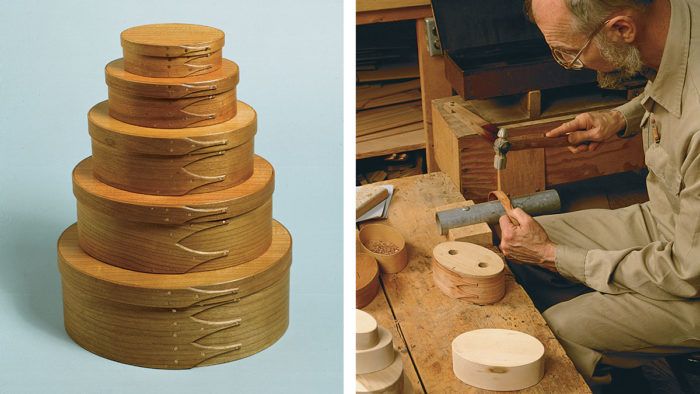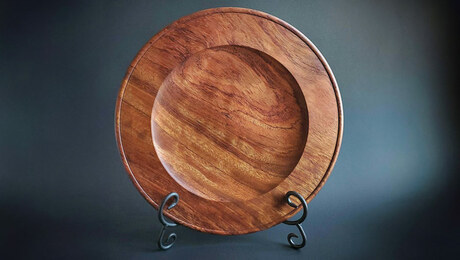Shaker Oval Boxes
Reproductions make fine gifts or storage
Synopsis: Oval boxes continue to be the most popular product the Shakers ever offered to the outside world. John Wilson teaches novice and experienced woodworkers how to make them in a day and a half, after he supplies prepared materials. Here, he explains how to prepare the stock and make your own patterns and forms. He tells how to handle checked veneer or split bands, and how to make your own cores, around which to bend the bands. He explains how to shape the fingers, bend the bands, and fit the tops and bottoms. Wilson’s boxes are finished with clear lacquer. A parts list and dimensions for five popular box sizes accompany a project plan.
Oval boxes continue to be the most popular product the Shakers ever offered to the outside world. Originally produced for their practicality (nesting boxes inside each other required little storage space) and utility (almost anything and everything was stored in these durable containers), they have become collector’s items for their simple beauty.
As testament to the boxes’ enduring appeal, I’ve been able to make a living for the last 10 years by traveling around the country teaching Shaker box making to groups of woodworkers. Box making’s appeal is that, in short order, you can have a stack of boxes, as shown in the photo at left, that any woodworker would be proud to show off or to give as gifts. In just a day and a half, my students, who range in ability from novice to advanced woodworkers, complete a stack of five traditional Shaker oval boxes.
The secret to the classes’ efficiency is that we start with the tops, bottoms and band material thicknessed and rough dimensioned. I also bring the necessary patterns and forms for cutting the band’s fingers, bending and drying the bands and shaping the tops and bottoms. I can supply all the necessary materials, hardware and forms if you want to make the boxes that way. But this article will show you how to prepare the stock and make your own patterns and forms.
There is no one right way to make an oval box, just as there is no one material for bands, no one system for numbering sizes of nesting boxes, nor one shape to the fingers. What can be said for the following procedure is that it works for me and for participants in my workshops to produce a stack of five boxes, from a small #0 to a #4 box, in the Shaker tradition. Because the #2 box is the mid-sized and easiest to work of the stack of five boxes, I suggest students start with it.
Selecting and preparing stock
Box bands for the base and the lid of an oval box are thin slices of hardwood, or thick veneers, that will bend and tack without splitting. The Shakers used maple bands and pine tops and bottoms more than anything else.
From Fine Woodworking #102
Fine Woodworking Recommended Products

Compass

Ridgid EB4424 Oscillating Spindle/Belt Sander

Dubuque Clamp Works Bar Clamps - 4 pack





















Log in or create an account to post a comment.
Sign up Log in